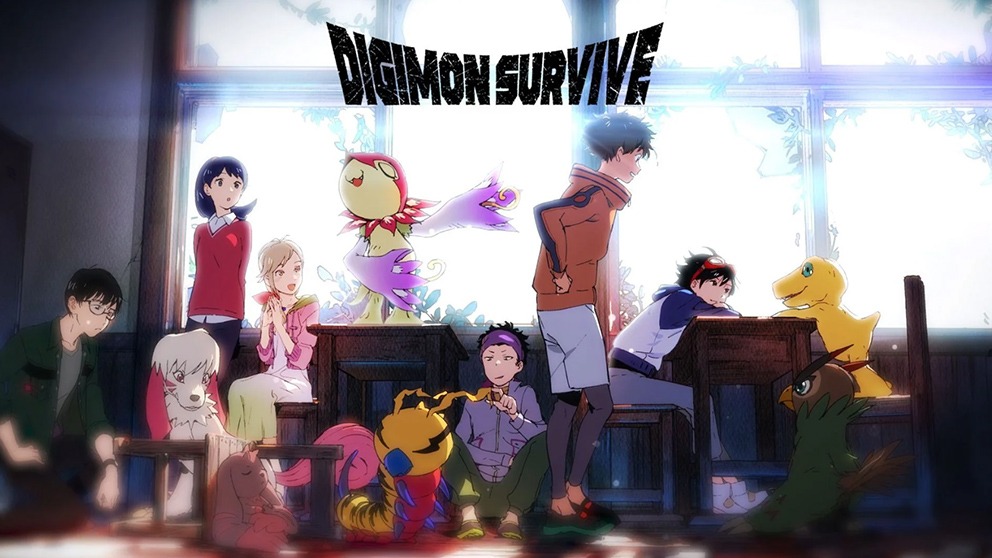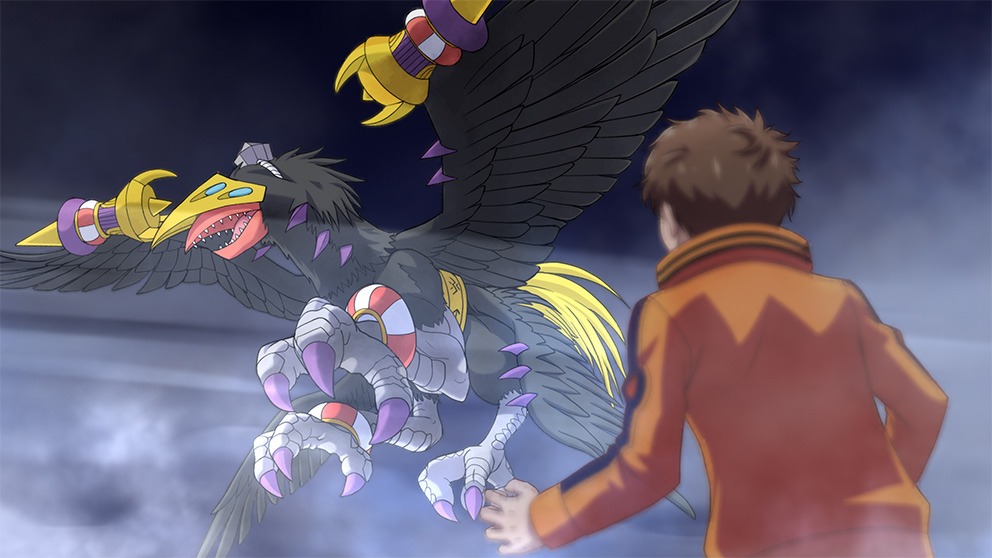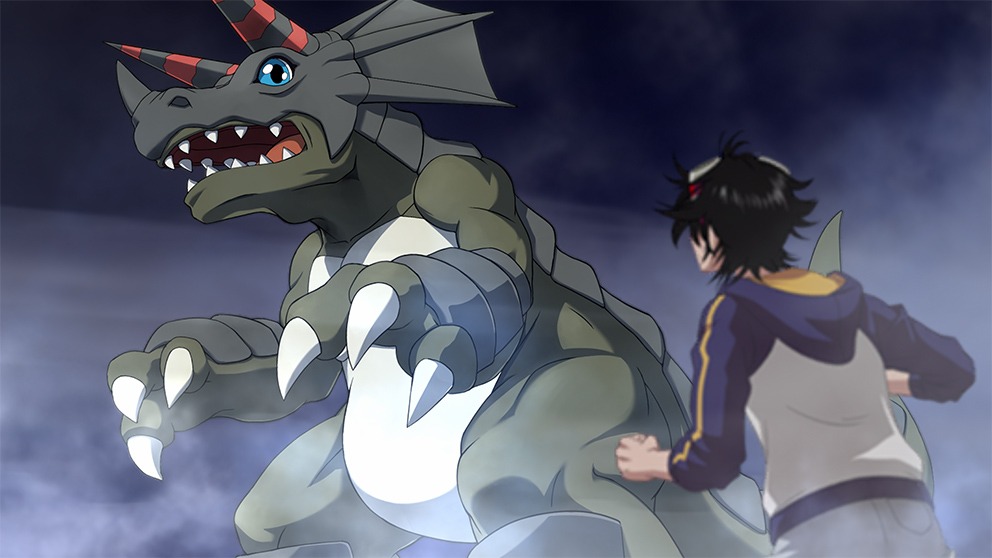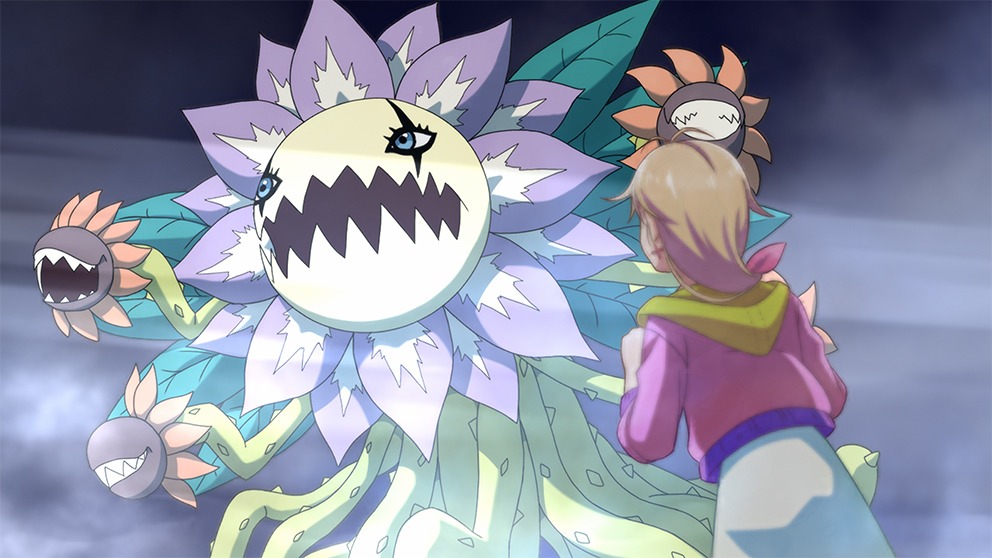You'll love it if:
- You’re a long-time Digimon fan
- You’re a fan of the Visual Novels genre
- You’re looking for a darker, more mature story set in a seemingly innocent setting
Not for you if:
- You don’t enjoy reading – a lot
- You’re looking for a pure RPG experience
- You're looking for a lot of extra content to delve into
Announced in July of 2018, developed by Witchcraft and Hyde, and published by Bandai Namco Entertainment, Digimon Survive is to mark a new starting point for a franchise that was unfortunately often paralleled to Pokémon. It promised a darker tale that would serve as a natural continuation of the themes and subject matter tackled in earlier iterations of the animated Digimon series, namely Digimon Adventure and its recent sequel, Digimon Adventure Tri.
Digimon Survive launched in July of 2022 after numerous delays which led many to believe the project to be suffering development difficulties. The final product shows anything but and is worthy of calling itself a “Digimon” game. However, it also had the misfortune of being mislabeled as something it isn’t.
Digimon Survive is not a tactical RPG – it is a Visual Novel through and through. As three-part VN and one-part tactical strategy game, it has found itself in the cross hair of internet controversy due to “tricking” players into thinking that it’s a Pokémon-style game – which it certainly isn’t.
A Story Dripping with Nostalgia
Digimon media has always followed a more complex story structure compared to Pokémon and Digimon Survive is no exception. While the latter often takes the form of episodic series, Digimon opts for serialized stories that take place in a parallel and/or digital world. Digimon Survive, in terms of its story structure, beats, and plot twists, is in the same vein as Persona games. Its twists and turns are best experienced personally, so let’s go over the basic premise and what players can expect from diving into Digimon Survive instead.
You’ll follow the majority of the story through the eyes of Takuma, a 14-year-old boy who is headed to a camp during spring break. He’s accompanied by his classmates and some of the local kids who happen to be around when they all stumble upon an ancient temple deep in the forest.

In Digimon Survive’s world, the stories of Kemonogami, or ancient monsters who spirit away children are very prominent. The group believes they’ve stumbled onto the said Kemonogami temple and things quickly go from bad to worse from there. Takuma and his friends find themselves in a world very similar to their own with no phone reception and close to a school that is eerily similar to their own, only it’s now delipidated and abandoned.
Each child, in turn, stumbles onto their own Kemonogami, which are the titular Digimon, and the story of survival starts to unravel through 12 chapters. Digimon Survive is a mystery story through and through – paired with the fact that major decisions lead to three distinct routes from two-thirds of the game and onward, the story is best left vague and up to you as the player to experience firsthand.

It’s worth noting that the game is true to its namesake – this is not a game for young children, especially those coming to contact with the Digimon brand for the first time. The story goes into unexpected places and stays there – it isn’t shy of using its “Survive” suffix to challenge the player’s perception of what a Digimon story should or shouldn’t be. This is a major positive in the game’s favor as it does something new and unexpected with its license.

Gameplay – Read a Little Dream of Me
Three-Parts Visual Novel
Most of what you’ll do in Digimon Survive consists of reading dialogue and making decisions on how Takuma should respond to different situations. This will lead you down one of three affinity paths which will affect not only your ending but also how Takuma’s Digimon, Agumon, evolves throughout the story. In this sense, the player has a very hands-off approach to gameplay which can turn away some people who would otherwise enjoy a new Digimon experience.
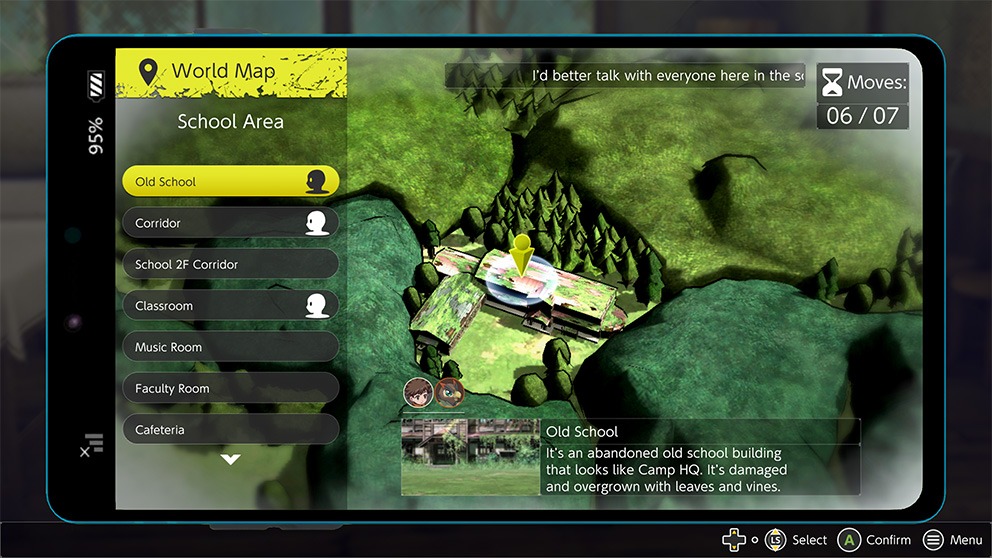
However, the game does enough to create player agency by allowing you to explore different environments and choose how you’ll engage with other children, in what order, and who you’ll favor over others. This leads to the game’s companion affinity system, a system found in Shin Megami Tensei and Persona games, where you’ll gather affinity points with various children based on your responses to them. This will lead to them supporting your Digimon in combat more often, as well as to their increased chances of survival throughout the story.
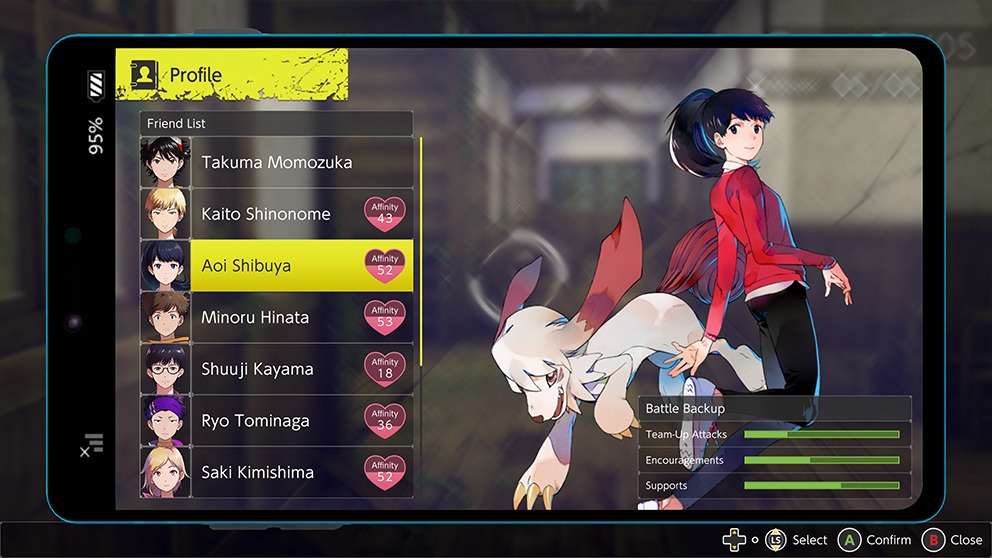
The game dissuades rushing through dialogue because you’re encouraged to speak to everyone and make them “happy” so they’ll survive for longer. Between major story beats, you’ll have a limited amount of time, or turns, to speak to whoever you like the most as a player, which will also limit how much you can interact with everyone. This will teach you to prioritize certain characters and their Digimon over others, for example, if you want Aoi and Labramon’s healing during combat to be more effective, you’ll speak to them more often.

While there is a disbalance between how much reading and combat there is in the game, the two gameplay aspects are fundamentally interlinked and cannot function isolated from one another – every gameplay feature in Digimon Survive exists for a reason.
One-Part Tactical RPG
When you’re not too busy talking to people and exploring the environment, you’ll engage in grid-based tactical combat. If the VN segments of Digimon Survive are akin to Danganronpa or Steins; Gate, the combat is akin to SMT: Devil Survivor and Fire Emblem games. You’ll start every combat scenario by positioning up to six Digimon onto a grid-based field, followed by the game telling you the Win/Lose conditions of the battle. It’s a fairly simple and familiar approach to tactical combat and the game doesn’t steer away from the pre-established norms and player expectations.
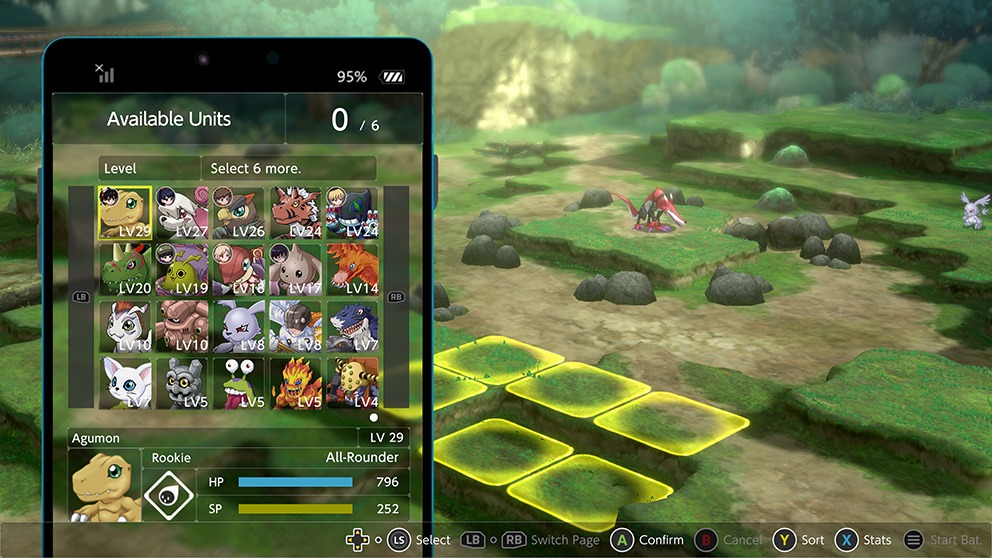
The combat itself is turn-based and numbers-based, where your Digimon’s level, stats, and items play a huge role in whether they’ll do damage and survive the opponents’ hits. Elevation, flanking, and elemental weakness also plays a role in combat, but the game isn’t difficult enough on Normal difficulty for you to worry yourself with these elements. Tactical combat becomes much more challenging on the Hard difficulty but the game tries its best to keep you in the Normal setting to keep the story beats going.
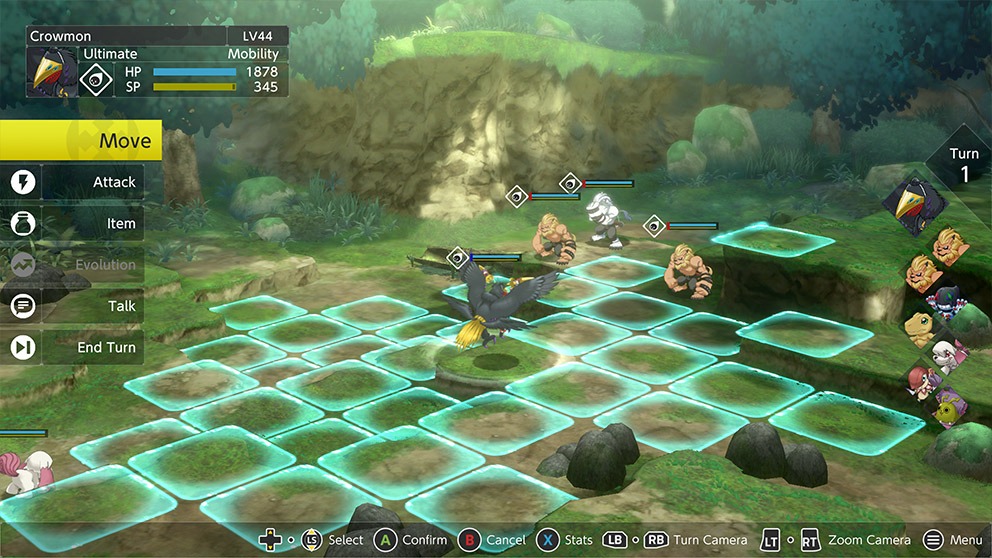
Similar to Shin Megami Tensei games, you’ll gather Digimon by talking to them during combat and by answering a series of vague, random questions. Depending on Takuma’s moral affinity, some will be easier to persuade into joining you than others. Contrary to the SMT series, Digimon Survive doesn’t feature fusions as a means for you to gain higher-evolution Digimon. Instead, Digimon evolves naturally throughout the game (main party) or via special items with low drop rates (caught Digimon).
Digimon Survive separates its combat into story-based encounters and Free Battle where you can grind for items, and levels, and recruit new Digimon. However, the ordeal is somewhat optional as you’ll never run into difficulty spikes akin to SMT games where every fusion and every skill matter. Similarly, buffs, debuffs, and status effects are present in Digimon Survive but are there as a helpful extension of your kit, not as a mandatory tool in your arsenal.
Presentation – Evoking Its Anime Roots
Visual Presentation
Digimon Survive is beautiful to look at – during its Visual Novel segments. Studios Witchcraft and Hyde did their homework when it came to evoking the same style and feel of the previous Digimon anime series by making every character a distinct individual. You can clearly understand Takuma’s adventurous spirit by simply looking at his character design, or Aoi’s reserved and anxious nature by observing her posture and body language.

All the characters and Digimon in the game are represented as artwork which is then placed in a simple 3D space. The camera pans from character to character during gameplay in smooth and seamless motions, ensuring that you’re never taken out of the experience by glaring animation glitches.
However, the tactical RPG segments of Digimon Survive show signs of being outdated and not just from a mechanical standpoint. The maps you’ll battle Digimon on are very simple 3D planes with a few obstacles and high grounds interspersed throughout. While the individual Digimon’s artwork is as crisp as it is in VN sections, 3D spaces throughout the game are barren and simplistic.
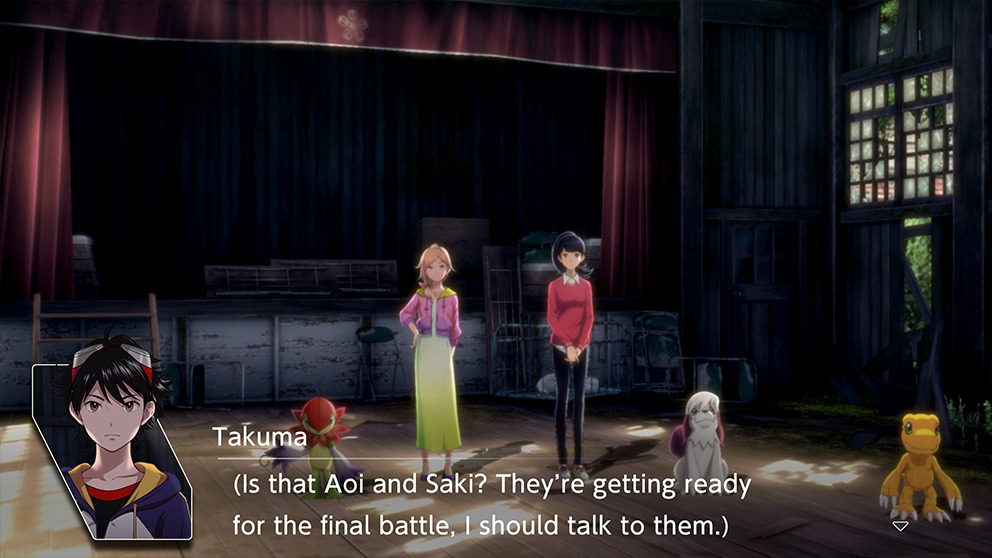
However, VN and tactical RPG genres were never graphical powerhouses, to begin with, and Digimon fans will simply enjoy the retro look without thinking twice about any low-poly objects popping up here and there. Likewise, thanks to its simpler technical presentation, the game preserves a steady framerate (except on Nintendo Switch where players have reported FPS drops both during combat and VN sections).
Audio Presentation
As impressive as Digimon Survive and its visuals are, the audio component is a bit lacking. Given how much reading you’ll do, you’ll listen to a few of the same tracks over and over for hours on end. While its instrumental tracks are neat and cozy, they can, unfortunately, fade into the background – Persona 4 Golden this is not. The game features a single vocal track which is very closely tied to the game’s narrative and packs an emotional punch.
Beyond that, the sound effects are pretty basic and relegated to menu navigation and combat shout-outs by your Digimon. The game only features a Japanese audio track for its voice-overs, with several subtitle languages to choose from. For anime purists like yours truly, this is great – for people who would rather listen to dialogue instead of reading it, this is very bad news.
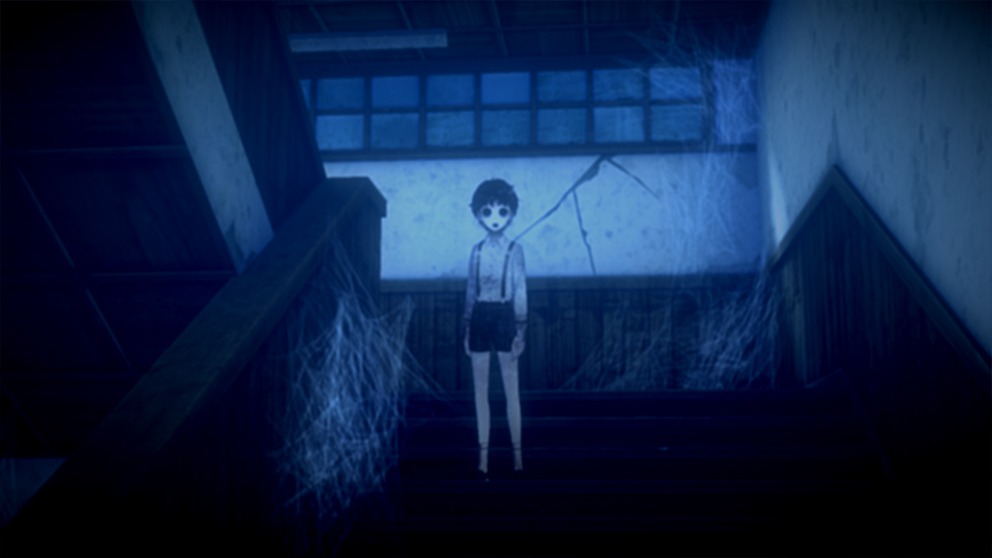
Playing the game in hours-long sessions can be tiring if you’re not an avid reader and skipping over dialogue just to get to the next combat section isn’t a good idea because you might miss something important. Overall, your mileage may wary in terms of how long your gaming sessions will be with Digimon Survive from the audio standpoint.
Story Presentation
Given that Digimon Survive is a “book in video game form”, it’s worth taking a closer look at how it presents its story to the player. With the script being as long as it is, there are bound to be issues with the story’s presentation – namely with how information is constantly repeated. Characters will often repeat the same information, facts, and feelings ad addendum to make sure that you’ve figured out what they think about the situation.
This is a Japanese game to its core, meaning that a lot of localization effort had to be put into the script to make sure that it “clicks” with the Western audience – this was done to a mixed effect. Characters will use sayings and lingo which you’d typically find in a 90s Saturday morning anime dub, but it’s to be expected – they are schoolkids after all.
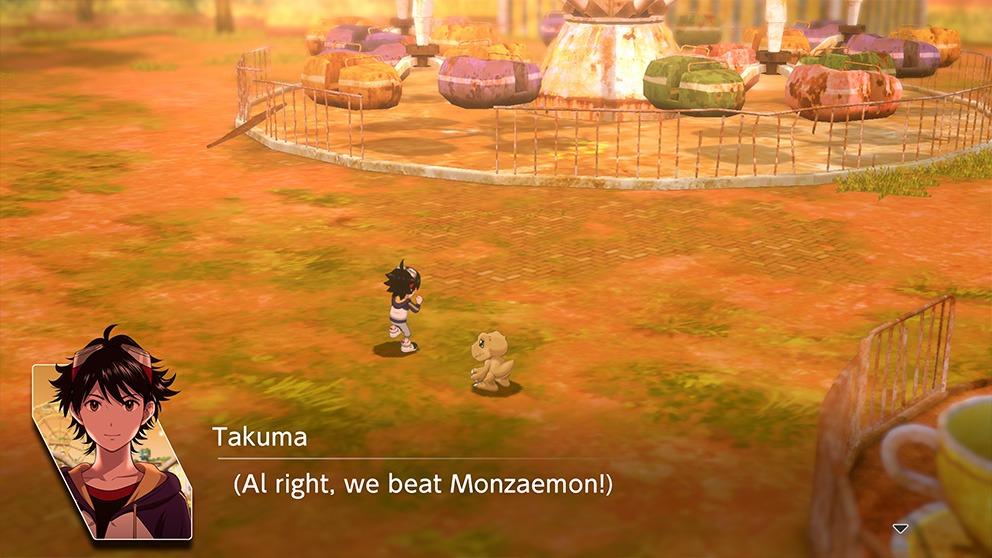
There are also multiple spelling and proofreading errors riddled throughout the game. The genders of some Digimon are flipped during conversations for no contextual or lore reason, while simple misspellings and grammar omissions are also present throughout. Keep in mind that the game relies on its textual content heavily – with how much story there is to read here, some mistakes are bound to slip through QA.
Final Verdict – Should You Play Digimon Survive?
So, should you go out and buy Digimon Survive? It all depends on what kind of a gamer you are and what kinds of experiences you’re looking for in your video games. If you’re fresh off of Pokémon Legends: Arceus or Shin Megami Tensei V and are looking for a similar monster-gathering RPG experience, this isn’t the game for you. Make no mistake – Digimon Survive is a competent game that knows what it set out to do from the get-go and went through with it without pivoting to a more traditional tactical RPG experience during development.
But, this also means that the game now exists in a niche (VNs) within a niche (tactical RPGs) and is bound to spark joy with only the most persistent Digimon and VN fans. This is unfortunate because the game doesn’t suffer from technical issues, bugs, or lack of polish – it delivers exactly on what it promised in 2018 with its intriguing teaser trailer.
The game does offer some replayability with its New Game+ mode where you’ll be able to tackle the “real” ending of the game, but that’s pretty much it as far as bonus content goes. You’ll be able to carry over your Digimon, their items, levels, and some other goodies into the second playthrough but that too is mandated by your love for VN games because the game’s format doesn’t pivot from its original formula.
If you’re looking for a deeper, more mature story to sink your teeth into Digimon Survive will provide you with that in spades. Just make sure that you know what to expect once you boot the game up and are greeted with paragraphs upon paragraphs of text before even a single combat scenario crops up.
Big thanks to Bandai Namco EU for the Review Copy!
